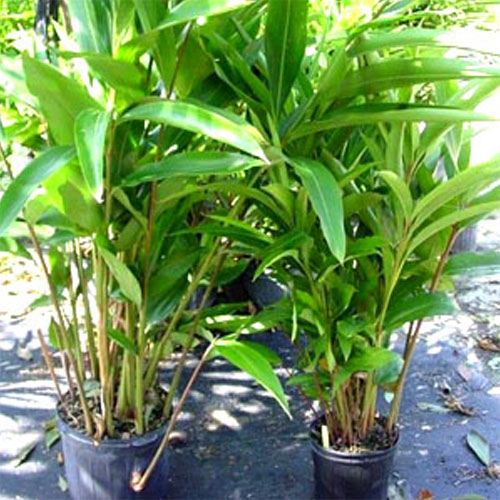Elaichi Plant
Elaichi, commonly known as Cardamom, is a spice plant renowned for its aromatic seeds used in culinary and medicinal applications. Here's a detailed overview of the Elaichi plant:
Description:
- Botanical Name: Elettaria cardamomum
- Family: Zingiberaceae
- Common Names: Elaichi, Cardamom, Green Cardamom, True Cardamom
- Appearance: The Elaichi plant is a perennial herbaceous plant that grows in clumps, reaching up to 2-4 meters (6.5-13 feet) in height. It has long, lance-shaped leaves and produces small, white to pale green flowers. The plant bears small, green pods containing the aromatic seeds that are the spice.
Growing Conditions:
- Climate: Elaichi thrives in tropical climates with high humidity and plenty of rainfall. It prefers temperatures between 10°C and 35°C (50°F and 95°F) and grows best in shaded or partially shaded areas, such as under a forest canopy.
- Soil: The plant prefers well-drained, loamy soils rich in organic matter. Slightly acidic to neutral soil with a pH of 4.5 to 7.0 is ideal for its growth.
- Watering: Regular watering is essential for the growth of the Elaichi plant, particularly during dry periods. However, overwatering should be avoided to prevent root rot.
Cultivation:
- Propagation: Elaichi is typically propagated through rhizomes (underground stems) or seeds. Rhizomes are the preferred method as they ensure faster and more reliable growth. The rhizomes are planted horizontally about 5-7 cm deep in the soil.
- Planting: The plant is usually grown in shaded areas, with a spacing of about 2-3 meters between plants. It is often intercropped with other shade-loving plants such as coffee or areca nut.
- Harvesting: Elaichi plants begin to bear fruit 2-3 years after planting. The pods are harvested when they are still green, typically between October and December. The pods are handpicked, dried, and then stored for use.
Uses:
- Culinary Uses: Elaichi is widely used in cooking, especially in Indian, Middle Eastern, and Scandinavian cuisines. It is a key ingredient in spice blends like garam masala and is used to flavor sweets, desserts, teas, and savory dishes.
- Medicinal Uses: Cardamom is known for its digestive properties and is often used to treat indigestion, gas, and stomach cramps. It is also used in traditional medicine to relieve respiratory issues, improve oral health, and as a natural breath freshener.
- Aromatic Uses: The essential oil extracted from cardamom seeds is used in perfumes, soaps, and aromatherapy for its warm, spicy fragrance.
Cultivation Tips:
- Pests/Diseases: Elaichi plants are susceptible to fungal diseases such as capsule rot and leaf spot. Regular inspection, proper spacing, and the use of organic fungicides can help manage these issues. Pests like thrips and borers can also affect the plant.


